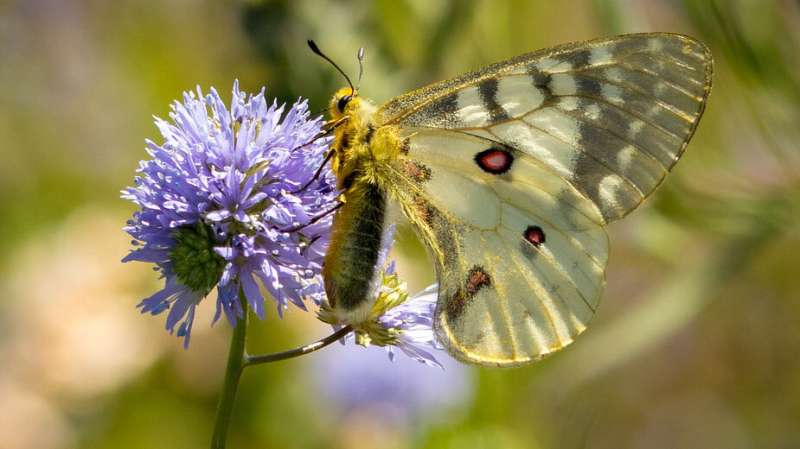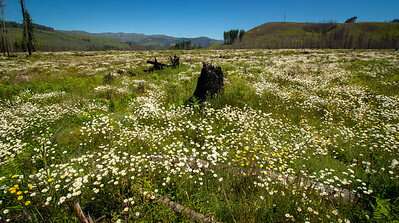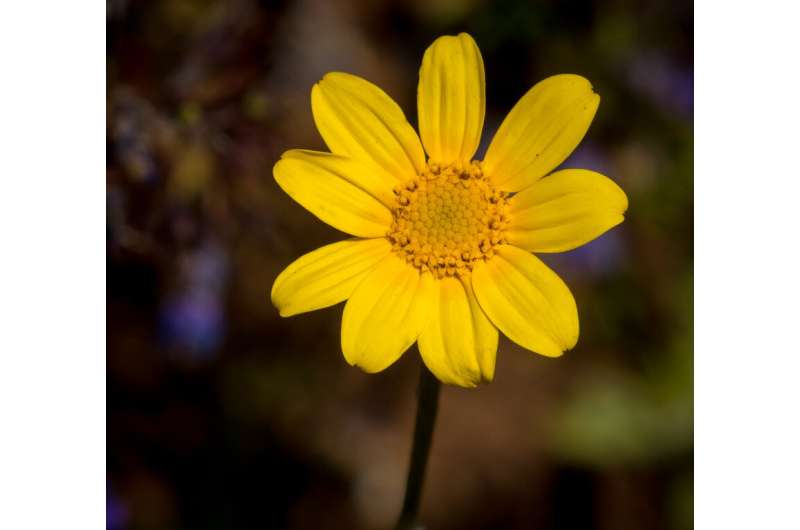Burned forest now a landscape abuzz with bees and flowers

When the Holiday Farm Fire tore through the McKenzie River Valley in 2020, burning 70,000 acres, it created a blank canvas of sorts.
Amid the fire's blackened landscape, UO ecologist Lauren Ponisio saw an opportunity to establish pollinators, specifically bees, in the burned forest.
Last fall, she and her graduate students visited Whitewater Ranch, owned by Oregon grads Jim Russell and Jane Haake, and strategically sowed about 20 different species of native plant seeds into burn piles on a ridge overlooking the McKenzie River, as well as into nearby clearcuts.
Some nine months later, Ponisio revisited the site and was pleased to see that many of the seeds have grown into thriving plants attracting bees and other pollinators.
"When we are out counting flowers, the plots are just hopping with pollinators," she said.
The seeds sown into slash piles are "doing amazing," she said, in part because fire killed everything in the seed bank, leaving no competition for the new seeds.
"Some of the plants are head high and covered in flowers," she said.
Seeds planted into clear cuts are doing less well because of competition from existing, non-native plants that can outcompete the new seedlings.

Ponisio visited the site with a retired entomologist named David Cappaert, who photographed the flowers and insects seen in the accompanying gallery.
Among the flowers thriving in the landscape are Gilia capitata, a member of the phlox family known as blue thimble flower; Collinsia grandiflora, also known as giant blue-eyed Mary; and Phacelia heterophylla, which has spiky and hairy flowers that are like "bee crack," she said.
Along with flowers, the researchers spotted several species of bumblebee, European honeybees, mason bees, leaf cutter bees, mining bees and tiny "sweat" bees.
How the bees found the newly sown plants is a bit of mystery, Ponisio said. Bees are known to travel varying distances scouting for flowers and nest sites. Colonial bees such as bumblebees send out worker bees to seek out new resources. Most bees are not colonial, however; they are just like regular insects where each female bee makes her own nest. Those bees may scout out areas with flowers and then build their nests nearby.
Bees like to nest close to resources, so it will be interesting to see if the bees are able to get established up the McKenzie, she said.
The plan is to continue monitoring and surveying the area over time with help from the UO's Environmental Leadership Program. Ponisio and Peg Boulay, the Environmental Leadership Program's co-director, recently received a grant from the Mills Davis Foundation to continue their work on sustainable forestry and pollinators.

Among the questions to be answered: How long will the native plants growing in the burn piles last, and will they be able to colonize nearby clearcuts? Will bee populations persist and grow over time, or will they show up one year and be gone the next?
The canopy created by growing Douglas firs is expected to close after six to 10 years, "so it will be interesting to see how long this can stay bee habitat," she said. The native plants sown into the slash piles are sun loving, so when the trees grow up, "they cannot thrive any longer."
By tracking the study area over a period of several years, researchers will have a better understanding of how habitat enhancement would fit into the large landscape with multiple landowners, she said.
Provided by University of Oregon




















